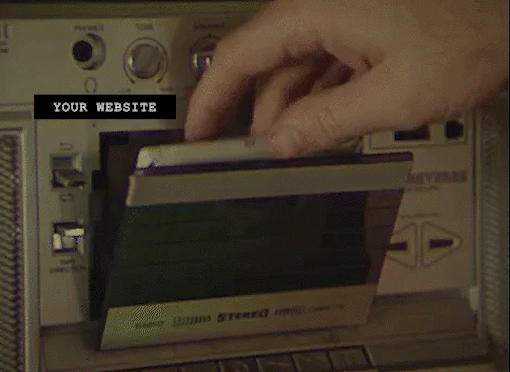The process of managing websites can easily spiral into chaos and become daunting. You might initially set out with humble expectations, believing you have limited content to work with. However, as you dive into it, you’ll likely discover it’s more complex and extensive.
Web design is meant to combine form and function in a way that makes visiting your site enjoyable, navigable, and engaging. So whether you’re redesigning your website or launching a new one from scratch, you need to plan and prepare before jumping into web design and development. And the best way to do that is by creating a website outline.

What is a Website Outline?
When building a successful website, having a clear roadmap is essential. Your website outline, also known as a site map, will serve as your North Star, guiding your way to provide a seamless user experience. A website outline is a visual or hierarchical representation of the structure and organization of a website. It functions as a blueprint, detailing the pages, sections, and content elements.
A website outline aims to establish a clear and logical structure for your website, making it easy for visitors to navigate and locate information effortlessly. It ensures that all relevant content is not only included but also thoughtfully organized, ultimately enriching the overall user experience.
In this blog post, we’ll explore the key sections of a website outline and how they contribute to your online success.
1. Revisit your Brand Foundation
Before diving into the details of your website outline, it’s important to revisit your brand foundation. Reflect on your business values, mission, target audience, and unique selling proposition. Aligning your website with your brand identity will ensure consistency and authenticity throughout your online presence.
2. Define your Website Goals and Purpose
Every successful website has clear goals and purpose. Identify what you want to achieve with your website—whether it’s generating leads, promoting products/services, or providing valuable information. Clearly defined goals will shape your content strategy and inform the structure of your website outline. Remember, every website has a unique mission. While many aim to boost sales, your site is like a friendly, always-available tool for engaging with your audience whenever they like, sparing you the need to be there around the clock. Let your website do some of the heavy lifting so you can focus on other things in your business.

3. Map Out the Behavior Flow
Understanding how visitors navigate your website is essential for creating an intuitive user experience. Map out the behavior flow by envisioning visitors’ typical path as they explore your website. Consider their entry points, the pages they are likely to visit, and the actions you want them to take. This will inform the layout and structure of your website outline.
4. Complete The Buyer Journey
Your website should cater to visitors at different stages of the buyer journey. Identify the key stages—awareness, consideration, decision—and create content that addresses their specific needs at each stage. Ensure your website outline includes dedicated sections or pages to effectively guide visitors through the buyer journey, building trust and encouraging conversions.
5. Identify your Lead Magnets and Offers
Capturing leads and nurturing them is crucial for business growth. Identify lead magnets, such as e-books, guides, or free resources, that align with your target audience’s needs and interests. Include these lead magnets strategically within your website outline, optimizing their placement to maximize visibility and encourage opt-ins.
6. Establish the Navigation and Sitemap
The navigation and sitemap are the backbone of your website outline. Design a logical and user-friendly navigation structure that allows visitors to quickly find the information they seek. Consider organizing pages into main categories and subcategories, ensuring a seamless navigation flow. Include a well-defined sitemap that outlines the hierarchical structure of your website, providing both search engines and visitors with a clear overview of its content.
Here’s an example of a website navigation structure for a brand designer:
- Home:
- Introduction
- Recent Projects
- Testimonials
- About:
- Meet the Designer
- Our Philosophy
- Our Process
- Client Stories
- Services:
- Brand Identity Design
- Logo Design
- Visual Branding
- Brand Guidelines
- Packaging Design
- Print Collateral
- Portfolio:
- Branding Projects
- Logo Designs
- Packaging Design
- Print Collateral
- Blog:
- Branding Tips
- Design Trends
- Case Studies
- Contact:
- Get in Touch
- Request a Quote
- FAQ
As you can see, a well-organized website navigation structure can make all the difference in helping visitors explore and understand the services a brand designer offers. Whether diving into recent projects, gaining insights into the designer’s philosophy, or seeking inspiration from the portfolio and blog, this navigation setup is designed to engage the user. Whether you’re a brand designer or in a different industry, a well-structured website can help you connect with your audience and achieve your online goals.
Crafting a comprehensive website outline is the foundation for a successful online presence. By revisiting your brand foundation, defining goals, mapping behavior flow, completing the buyer journey, identifying lead magnets, and establishing navigation, you can create a website that resonates with your audience and drives conversions. Embrace the power of website outlines and unlock the true potential of your online success.
Remember, a website outline is a planning tool and a roadmap to guide your web design and development process. Invest time and effort in creating a well-thought-out website outline, and your payoff will be a website that’s all about the user – it’s like rolling out the red carpet for them, ensuring an enjoyable and compelling experience.

